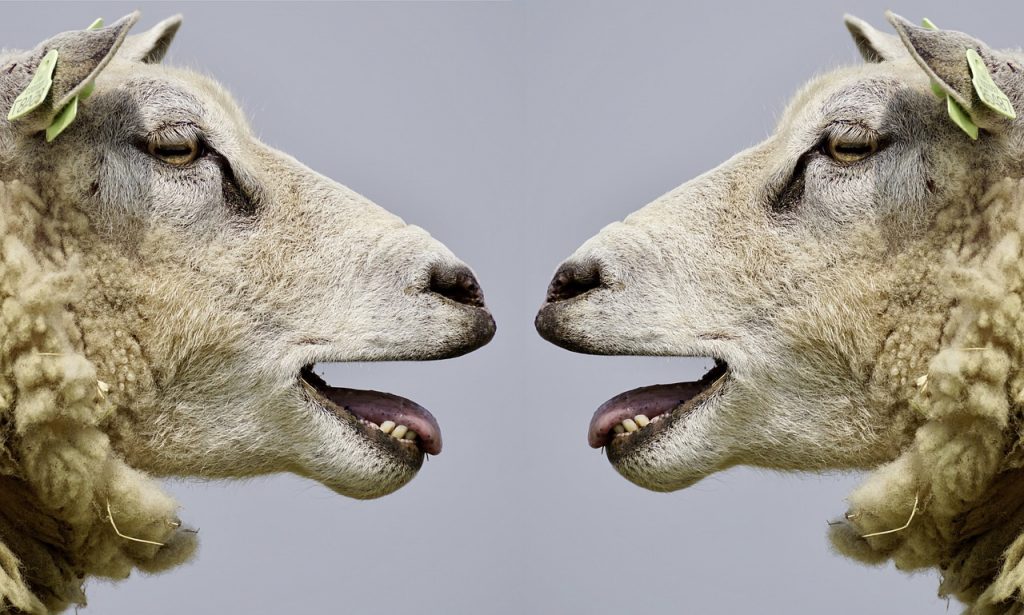Through the Looking Glass

GUEST POST from Robyn Bolton
Do you sometimes feel like you’re living in an alternate reality?
If so, you’re not alone. Most innovators feel that way at some point.
After all, you see things that others don’t.
Question things that seem inevitable and true.
Make connections where others only see differences.
Do things that seem impossible.
It’s easy to believe that you’re the crazy one, the Mad Hatter and permanent resident of Wonderland.
But what if you’re not the crazy one?
What if you’re Alice?
And you’re stepping through the looking glass every time you go to work?
In Lewis Carroll’s book, the other side of the looking glass is a chessboard, and all its inhabitants are chess pieces that move in defined and prescribed ways, follow specific rules, and achieve defined goals. Sound familiar?
Here are a few other things that may sound familiar, too
“The rule is, jam tomorrow and jam yesterday – but never jam today.” – The White Queen
In this scene, the White Queen offers to hire Alice as her lady’s maid and pay her “twopence a week and jam every other day.” When Alice explains that she doesn’t want the job, doesn’t like jam, and certainly doesn’t want jam today, the queen scoffs and explains the rule.
The problem, Alice points out, is that it’s always today, and that means there’s never jam.
Replace “jam” with “innovation,” and this hits a little too close to home for most innovators.
How often do you hear about the “good old days” when the company was more entrepreneurial, willing to experiment and take risks, and encouraged everyone to innovate?
Innovation yesterday.
How often do you hear that the company will invest in innovation, restart its radical innovation efforts, and disrupt itself as soon as the economy rebounds, business improves, and things settle down a bit? Innovation tomorrow.
But never innovation today. After all, “it’s [innovation] every other day: today isn’t any other day, you know.”
“When I use a word, it means just what I choose it to mean – neither more, not less.” – Humpty Dumpty
In this scene, poor Alice tries to converse with Humpty Dumpty, but he keeps using the “wrong” words. Except they’re not the wrong words because they mean exactly what he chooses them to mean.
Even worse, when Alice asks Humpty to define confusing terms, he gets angry, speaks in a “scornful tone,” and smiles “contemptuously” before “wagging his head gravely from side to side.
We all know what the words we use mean, but we too often think others share our definitions. We use “innovation” and “growth,” assuming people know what we mean. But they don’t. They know what the words mean to them. And that may or may not be what we mean.
When managers encourage people to share ideas, challenge the status quo, and take risks, things get even trickier. People listen, share ideas, challenge the status quo, and take risks. Then they are confused when management doesn’t acknowledge their efforts. No one realizes that those requests meant one thing to the managers who gave them and a different thing to the people who did them.
“It takes all the running you can do, to keep in the same place. If you want to go somewhere else, you must run at least twice as fast as that!” – The Red Queen
In this scene, the Red Queen introduces life on the other side of the looking glass and explains Alice’s new role as a pawn. Of course, the explanation comes after a long sprint that seems to get them nowhere and only confuses Alice more.
When “tomorrow” finally comes, and it’s time for innovation, it often comes with a mandate to “act with urgency” to avoid falling behind. I’ve seen managers set goals of creating and launching a business with $250M revenue in 3 years and leadership teams scrambling to develop a portfolio of businesses that would generate $16B in 10 years.
Yes, the world is moving faster, so companies need to increase the pace at which they operate and innovate. But if you’re doing all you can, you can’t do twice as much. You need help – more people and more funding, not more meetings or oversight.
“Life, what is it but a dream?”
Managers and executives, like the kings and queens, have roles to play. They live in a defined space, an org chart rather than a chessboard, and they do their best to navigate it following rules set by tradition, culture, and HR.
But you are like Alice. You see things differently. You question what’s taken as given. And, every now and then, you probably want to shake someone until they grow “shorter – and fatter – and softer – and rounder – and…[into] a kitten, after all.”
So how do you get back to reality and bring everyone with you? You talk to people. You ask questions and listen to the answers. You seek to understand their point of view and then share yours.
Some will choose to stay where they are.
Some will choose to follow you back through the looking glass.
They will be the ones who transform a leadership problem into a leadership triumph.
Image credits: Pixabay
![]() Sign up here to join 17,000+ leaders getting Human-Centered Change & Innovation Weekly delivered to their inbox every week.
Sign up here to join 17,000+ leaders getting Human-Centered Change & Innovation Weekly delivered to their inbox every week.








